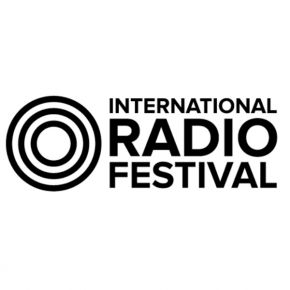IRF: DRM envisions new revenue streams for FM

MUMBAI: The session by Digital Radio Mondiale (DRM) at the India Radio Forum 2009 appraised India's private broadcast industry about the benefits of conversion of traditional analog FM bands into digital arena.
Addressed by DRM Chairman Distribution Interfaces and vice chairman DRM technical Committee Alexander Zink and DRM Project Director Vineeta Dwiwedi, the session highlighted the various incremental revenue streams for the FM sector through DRM.
While in analog broadcast, there is transmission of electromagnetic waves; digital broadcast contains the same or more information in a compressed format more efficiently within the same frequency bandwidth. In addition to the compressed music or audio data as AAC, it can also transport other digital content such as multimedia data, dynamic labels, convenience service signalling etc.
The adoption of this technology will enhance the audio quality on FM to a near CD quality and also provide an option of 5.1 surround sound for the listeners. Also it can bring revolution in the FM sector with value added services like Journaline text display of information on traffic, weather, latest news updates, Electronic Program Guide (EPG)", Zink said.
There is also an option for multiple languages to cater to the needs of Indian audiences. Analog Devices India senior program manager Subrahmanyam explains, The services with similar texts would be available in multiple languages. Also the radio stations would be tuned in by name and not by frequency and it would retune itself after leaving a coverage area and entering another....
The DRM technology if adopted for the FM sector would give more choice for listeners in teams of content. The technology can facilitate upto four programs from one frequency. More content would mean more revenues for FM stations as more slots would be available with the FM players to sell for advertising,... pointed Alexander Zink during the presentation. The revenues of radio players would also in turn increase the revenues of government.
The slideshow facility proposed in DRM would act as an additional revenue generator for FM industry. The FM players can create slideshows for their advertising and transmit it on the DRM devices thereby creating a revenue stream for them. The FM players can also transmit advertising on LCD screens and transmitting album art, picture of the singer would be possible with the DRM technology....
Within India, India Radio Forum was the first occasion where the DRM technology was presented before the FM fraternity. The DRM+ for the FM would be standardized by (ITU) International Telecommunications Union and (ETSI) European Telecommunications Standards Institute by September 2009. Since the license fee is for the spectrum used and if the operator is able to utilize this frequency for 4 stations or channels, then the economic works better for not only the broadcaster but also for the Government because fo the revenue sharing model,... adds Subrahmanyam. The AM mode was endorsed by ITU in 2002 and standarised by ETSI in 2003.
Although DRM has communicated with the FM sector for the first time, they have been working with AIR from 2007. The First DRM trials in India were carried out in Delhi in 2007 by AIR and ABU. These trails Broadcasted AM analog and DRM as simulcast on one frequency (20 kHz channel) and re-using existing transmitter infrastructure,... pointed Dwiwedi during the presentation.
AIR commenced its regular DRM service from Khampur (Delhi) from 16 January 2009 (250 kilowatt shortwave transmitter). It has approximately five hours of Indian broadcast for listeners in the UK and Europe between 2315 to 0400 IST on 9950 KHz. additional three hours of local transmission within India from 1430 to 1730 IST on 6100 kHz.
The Indian Government formed a Planning Commission sub-group Going Digital... for carrying out the DRM transmissions headed by the Member Secretary, Planning Commission. AIR plans to follow the migration plan form analog to digital in four steps- Delhi by 2010, All Mega cities by 2011, All Tier II and Tier III cities by 2012 and the remaining areas by 2013. Air plans a nation wide switch-off of analog broadcast (AM) to DRM mode by 2015. At Rajkot and Chinsurah, 1000 kW MW (medium wave) DRM capable transmitters are under installation. There are plans to introduce DRM transmissions in high power medium wave and short wave
transmitters on a large scale in the near future.
AIR is planning installation of 41 new DRM MW transmitters and conversion of 36 existing MW transmitters for DRM operation. This amounts to about 70 per cent DRM radio coverage in India by end of 11th government five year plan i.e. by 2013.
DRM also held a Digital Radio Workshop in India during the BES Expo International Conference to be held in Delhi from 23-25 Feb 2009. The DRM Consortium founded in 1998 is a non-commercial body to promote the adoption of the DRM standard, which is a non-proprietary open standard. Its members include around 100 members including broadcasters, manufacturers, network operators, regulators, research institutes, etc.














